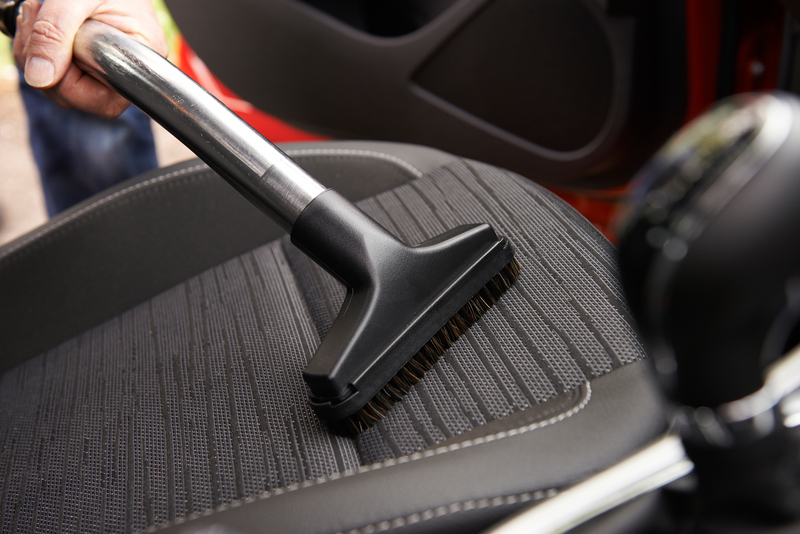Reclaim Your Stovetop's Sparkle by Cleaning Burnt Residue
Posted on 20/08/2025

Reclaim Your Stovetop's Sparkle by Cleaning Burnt Residue
If you've ever looked at your stovetop and sighed at the sight of burnt-on residue, you're not alone. Over time, even the most careful cooks can find themselves battling stubborn, caked-on messes that rob their kitchens of shine and cleanliness. Restoring your stovetop's sparkle may seem daunting, but with the right techniques and a little patience, you can easily remove burnt food and stains--bringing back that gleaming, like-new finish. This comprehensive guide will help you master the art of cleaning burnt stovetops, using both everyday household items and specialized products.
Why Cleaning Burnt-on Residue Matters
- Prolongs Appliance Lifespan: Regularly removing stuck-on food prevents corrosion and mechanical issues.
- Improves Cooking Results: A clean surface ensures even heating and safer cooking conditions.
- Boosts Kitchen Hygiene: Baked-on grease and food can attract pests and harbor bacteria.
- Enhances Aesthetics: A sparkling stovetop elevates the whole look of your kitchen.
Neglecting burnt stovetop stains can make cleaning more challenging over time, as layers accumulate and solidify. That's why tackling residue promptly improves results and helps you reclaim your stovetop's shine with less effort.
Know Your Stovetop: Different Surfaces, Different Approaches
Before you roll up your sleeves, it's vital to understand the type of stovetop you are dealing with. Methods for cleaning burnt residue vary depending on your stove's material. Using the wrong technique might worsen the residue or even damage those shiny surfaces.
- Gas Stovetops: Typically feature removable grates and burner caps made from cast iron or steel. Their porcelain or stainless-steel bases can withstand more scrubbing but require care.
- Electric Coil Burners: Have removable coils and drip pans, which often accumulate burnt spills.
- Glass/Ceramic Cooktops: These are popular for their modern aesthetic but scratch easily. Special cleaners and gentle tools are required.
- Induction Cooktops: Similar to glass, these need delicate cleaning methods to avoid surface scratches.
Step-by-Step Guide: How to Clean Burnt Residue from Your Stovetop
1. Safety First
- Turn off all burners and unplug electric stoves before cleaning.
- Wait until all parts are completely cool.
- Wear gloves to protect your hands from harsh cleaners or sharp edges.
2. Remove Loose Debris
- Use a dry, soft brush or paper towel to gently sweep away loose crumbs and debris.
- Remove burner grates, caps, or coils (if applicable).
3. Tackle the Burnt Residue
Now, let's get down to the toughest challenge: cleaning the stubborn, burnt-on gunk.
- For Gas Stovetops:
- Soak grates and burner caps in a sink or basin filled with hot, soapy water for at least 20 minutes.
- Use a soft-bristled brush (or an old toothbrush) to scrub away softened residue.
- For really tough spots, sprinkle baking soda directly on stains, spritz with vinegar, and let bubble for a few minutes before scrubbing.
- For Glass or Ceramic Cooktops:
- Wipe with a damp, soft cloth to remove loose crumbs.
- Apply a specialized cooktop cleaner or create a paste of baking soda and water.
- Spread the paste over burnt residue, cover with a damp towel, and let sit for 15-20 minutes.
- Gently use a plastic scraper (never metal) at a 45? angle to lift residue.
- Buff clean with a microfiber cloth.
- For Electric Coil Burners:
- Remove and wipe down coils with a damp cloth (never submerge coils).
- Soak drip pans in hot, soapy water and scrub with baking soda paste for extra cleaning power.
4. Dealing with Extreme Burnt Residue & Stubborn Stains
For extremely stubborn burnt-on residue, you may need extra steps:
- Make a Paste: Mix equal parts baking soda and hydrogen peroxide. Apply the paste over the toughest stains and let sit for 15-30 minutes before scrubbing.
- Razor Scraper: For glass cooktops only, you can use a razor blade scraper with extreme caution. Hold the blade at a shallow angle, gently scraping residue--never dig into the glass.
- Commercial Stove Cleaners: Use products labeled as safe for your stovetop type. Always follow instructions and ventilate your kitchen.
5. Rinse and Polish
- Wipe away cleaning residues thoroughly with a damp cloth.
- Buff the surface with a dry, streak-free microfiber towel for that signature sparkle.
Natural and Homemade Ways to Clean Burnt Stovetop Residue
Looking for eco-friendly solutions or want to avoid harsh chemicals? You might already have what you need in your kitchen pantry!
- Baking Soda: Its gentle abrasiveness cuts through grease and baked-on food without scratching most surfaces.
- White Vinegar: The acidity in vinegar helps dissolve mineral deposits and stubborn stains.
- Lemon Juice: Known for its cleaning power, it also leaves a fresh scent.
- Salt and Water: Coarse salt acts like a gentle scrubber, useful for cast iron and grates.
Learn more about greener cleaning options here.
Prevention: Keep Your Stovetop Sparkling Longer
- Wipe Daily: Lower the risk of caked-on mess by wiping spills right away, while your stovetop is still warm (but not hot!).
- Use Proper Cookware: Avoid overflows by using pots and pans properly sized for your burners.
- Liners and Trays: Place silicone or disposable liners under burners or coils for hassle-free cleanup.
- Regular Deep Cleans: Set a schedule (weekly or bi-weekly) for a full clean-up to target hidden grime before it builds up.
Keeping up with regular maintenance makes your stovetop cleaning sessions shorter and easier, helping to preserve that sparkling finish for the long haul.
What Not to Do: Avoid These Stovetop Cleaning Pitfalls
- Never use steel wool or abrasive pads on glass or ceramic surfaces--these will scratch and dull your stovetop.
- Avoid harsh chemical cleaners unless confirmed safe for your surface type.
- Don't soak electrical components, especially electric coils.
- Don't reassemble burner parts until all are completely dry, to avoid short-circuiting.
- Never scrape aggressively with metal tools on delicate surfaces.
Frequently Asked Questions About Cleaning Burnt Stovetops
How often should I deep clean my stovetop?
Ideally, you should perform a thorough cleaning at least once every week, unless you notice immediate burnt-on messes after cooking. The more regularly you clean, the easier the job becomes!
Can I use oven cleaner on my stovetop?
It's not recommended unless the cleaner is explicitly labeled as safe for stovetop use. Oven cleaners can be too harsh for ceramic, glass, or stainless-steel surfaces.
What if the residue won't come off?
Repeat the baking soda paste-and-scrub method, and be patient--for extremely tough stains, letting the paste or cleaner sit even longer can help. Avoid resorting to risky scraping techniques, which could damage your stovetop.
How do I clean around burners?
A toothbrush or narrow scrub brush works well for hard-to-reach areas around burners. Q-tips dipped in cleaning solution can tackle grime in tight spots.

Enjoy Cooking Again--With a Sparkling, Burnt-Residue-Free Stovetop
A clean stovetop isn't just about looks--it's about improved performance, hygiene, and pride in your kitchen. While cleaning burnt residue may require a bit of elbow grease, employing these strategic cleaning methods and prevention tips will keep your stovetop looking brand new for years to come. Whether you use gentle DIY solutions or dedicated stove cleaners, making this routine part of your kitchen maintenance sets you up for delicious meals and dazzling results, every time.
Reclaim your stovetop's sparkle today and make every cooking experience shine!



